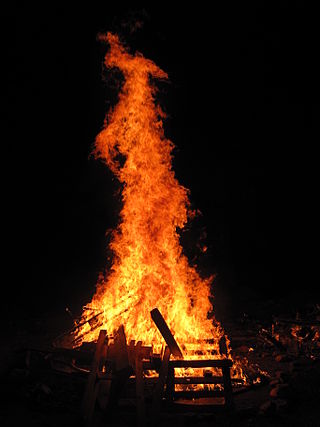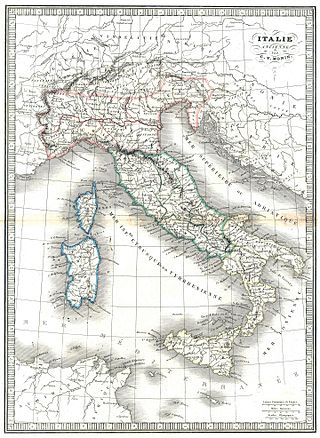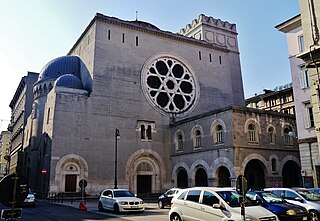
Blood libel or ritual murder libel is an antisemitic canard which falsely accuses Jews of murdering Christians in order to use their blood in the performance of religious rituals. Echoing very old myths of secret cultic practices in many prehistoric societies, the claim, as it is leveled against Jews, was rarely attested to in antiquity. According to Tertullian, it originally emerged in late antiquity as an accusation made against members of the early Christian community of the Roman Empire. Once this accusation had been dismissed, it was revived a millennium later as a Christian slander against Jews in the medieval period. The first examples of medieval blood libel emerged in England in the mid 1100s before spreading into other parts of Europe, especially France and Germany. This libel, alongside those of well poisoning and host desecration, became a major theme of the persecution of Jews in Europe from that period down to modern times.

Simon of Trent, also known as Simeon (1472–1475), was a young boy from the city of Trent, in the Prince-Bishopric of Trent, whose disappearance and death was falsely attributed to the leaders of the city's Jewish community, based on the forced confessions of Jews obtained under judicial torture.

Iyar is the eighth month of the civil year and the second month of the Jewish religious year on the Hebrew calendar. The name is Babylonian in origin. It is a month of 29 days. Iyar usually falls in April–May on the Gregorian calendar.

The Damascus affair of February 1840 was the disappearance of an Italian monk and his servant, for which a large number of Jews were summarily tortured until they "confessed" to murder. As an instance of antisemitism and a blood libel, news of the case spread, across the Middle East, to Europe, and the Western world.

The history of the Jews in Italy spans more than two thousand years to the present. The Jewish presence in Italy dates to the pre-Christian Roman period and has continued, despite periods of extreme persecution and expulsions, until the present. As of 2019, the estimated core Jewish population in Italy numbers around 45,000.

Elio Toaff was the Chief Rabbi of Rome from 1951 to 2002. He served as a rabbi in Venice from 1947, and in 1951 became the Chief Rabbi of Rome.
Italian Jews or Roman Jews can be used in a broad sense to mean all Jews living in or with roots in Italy, or, in a narrower sense, to mean the Italkim, an ancient community living in Italy since the Ancient Roman era, who use the Italian liturgy as distinct from those Jewish communities in Italy dating from medieval or modern times who use the Sephardic liturgy or the Nusach Ashkenaz.

The history of the Jews in Trieste goes back over 800 years.
Antisemitism in the history of the Jews in the Middle Ages became increasingly prevalent in the Late Middle Ages. Early instances of pogroms against Jews are recorded in the context of the First Crusade. Expulsions of Jews from cities and instances of blood libel became increasingly common from the 13th to the 15th century. This trend only peaked after the end of the medieval period, and it only subsided with Jewish emancipation in the late 18th and 19th centuries.
Ariel Toaff is an Italian-Jewish historian. He is a professor of Medieval and Renaissance History at Bar-Ilan University in Israel, whose work has focused on Jews and their history in Italy.
The Rhodes blood libel was an 1840 event of blood libel against Jews, in which the Greek Orthodox community accused Jews on the island of Rhodes of the ritual murder of a Christian boy who disappeared in February of that year.

Ettore Ovazza was an Italian Jewish banker. He was an early financer of Benito Mussolini, whom he was a personal friend of, and a strong supporter of Italian fascism. He founded the anti-Zionist journal La nostra bandiera. Believing that his position would be restored after the war, Ovazza stayed on after the Germans occupied Italy. Together with his wife and children, shortly after the Fall of Fascism and Mussolini's government during World War II, he was killed near the Swiss border by SS troops in 1943.
Amos Luzzatto was an Italian-Jewish writer and essayist, born in a family of ancient tradition. His mother's father, Dante Lattes, was one of the most important representatives of Jewish Italian culture in the 20th century. His father's great-great-grandfather, Samuel David Luzzatto (Shadal), was teaching at the Rabbinical College in Padua and was an Italian representative of the "Wissenschaft des Judentums".
Riccardo Calimani is a writer and historian, specialising in Italian and European Judaism and Jewish history.

The history of the Jews in Calabria reaches back over two millennia. Calabria is at the very south of the Italian peninsula, to which it is connected by the Monte Pollino massif, while on the east, south and west it is surrounded by the Ionian and Tyrrhenian seas. Jews have had a presence in Calabria for at least 1600 years and possibly as much as 2300 years. Calabrian Jews have had notable influence on many areas of Jewish life and culture. The Jews of Calabria are virtually identical to the neighbouring Jews of Sicily but are considered separate. However, the Jews of Calabria and the Jews of Apulia are historically the same community, only today are considered separate. Occasionally, there is confusion with the southern Jewish community in Calabria and the northern Jewish community in Reggio Emilia. Both communities have always been entirely separate.

Werner of Oberwesel was a 16-year-old boy whose unexplained death was blamed on Jews, leading to revenge killings of Jews across Europe. He was venerated as a Christian saint, and his memorial day was 19 April.
Adi Schwartz is an Israeli journalist and academic. A former staff writer for Haaretz, he currently works as a freelance journalist for Israeli and international newspapers and magazines. His primary fields of interest include the Arab–Israeli conflict and Israeli and Jewish current affairs.
Sefer ha-Asuppot is the name of a compilation of medieval German Jewish halakha and minhagim, the manuscript of which is privately held by David H. Feinberg of New York. The work includes a large number of teachings, minhagim, descriptions of popular costumes, halachic rulings, and collected stories from numerous authors, displaying the ordinary life of Rhineland Jews in during the twelfth and thirteenth centuries. The manuscript is endowed with vowel signs almost throughout, which makes it the only non-liturgical and non-Biblical text of its kind, and the vowels follow the Spanish pronunciation. The manuscript is the work of several scribes, containing multiple hands and multiple inks. One scribe was probably named Meir.

Istanbul became one of the world's most important Jewish centers in the 16th and 17th centuries. In marked contrast to Jews in Europe, Ottoman Jews were allowed to work in any profession and could also enter the Ottoman court. Ottoman Jews in Istanbul excelled in commerce and trade and came to dominate the medical profession. Despite making up only 10% of the city population, Jews constituted 62% of licensed doctors in 1600.
Guido Bedarida was an Italian Jewish writer. He is notable for being the main source of Judeo-Livornese literature.










